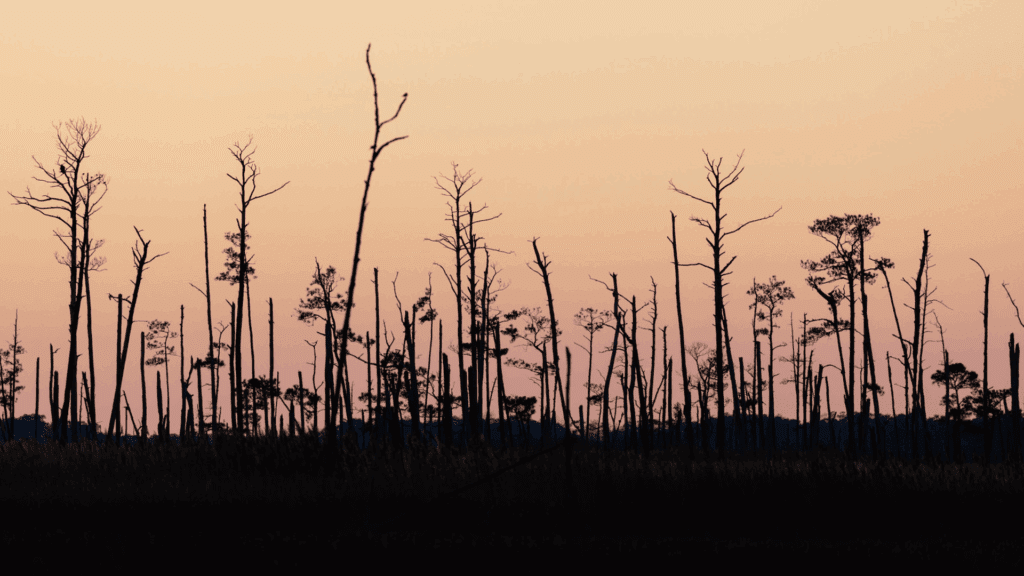The article discusses “ghost forests” along the Chesapeake Bay—remnants of once-lush cedar and pine forests now dead due to rising sea levels and saltwater intrusion. Starting in the late 19th century, coastal trees have been dying off, creating these skeletal landscapes, which often transition into swampy wetlands.
The shift from forests to wetlands varies: some areas evolve into productive swamps that offer important ecosystem services, such as storm protection and carbon storage, while others become dominated by invasive species, disrupting local ecosystems. Coastal ecologists like Keringedan highlight that this phenomenon is primarily driven by climate change factors, including severe storm surges and prolonged drought.
Wetlands can provide habitats for diverse species and sequester significant carbon, often more effectively than the forests they replace. However, flooding that occurs too quickly can lead to mud flats, diminishing the benefits of both forests and wetlands. The article notes that since 1985, a significant portion of the forests in the Alligator River National Wildlife Refuge has transitioned to wetland, illustrating the ongoing trend.
Ultimately, researchers emphasize the importance of combating climate change to mitigate these transitions, as the full impact of these changes may take decades to realize.
Source link


